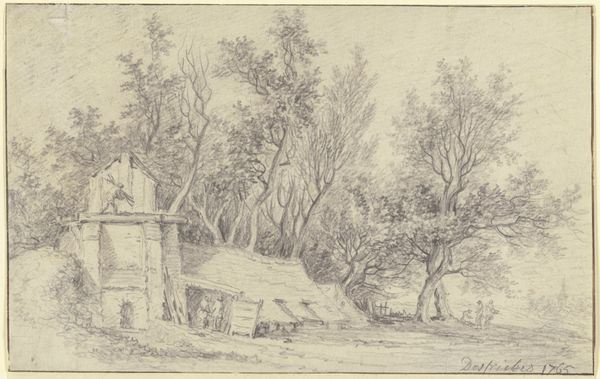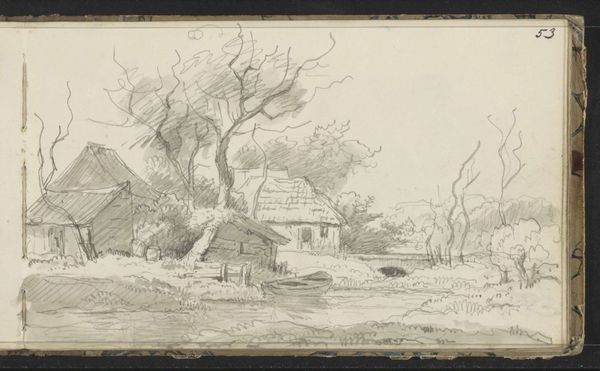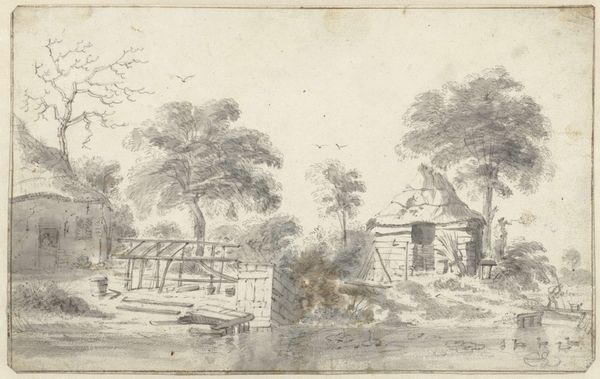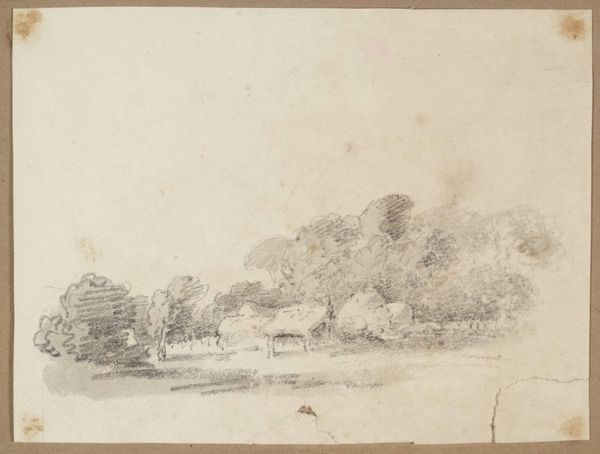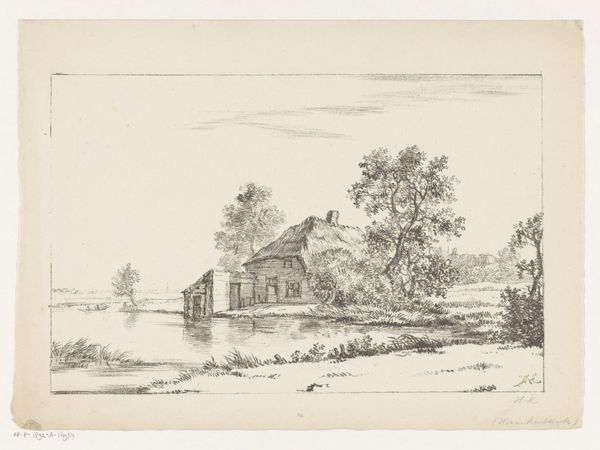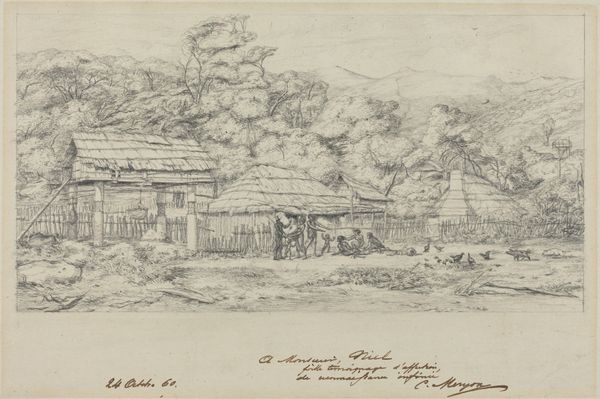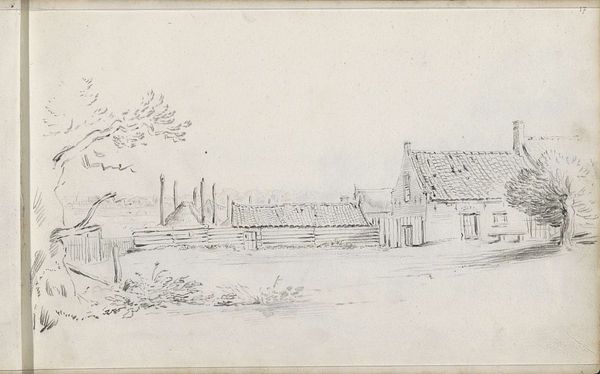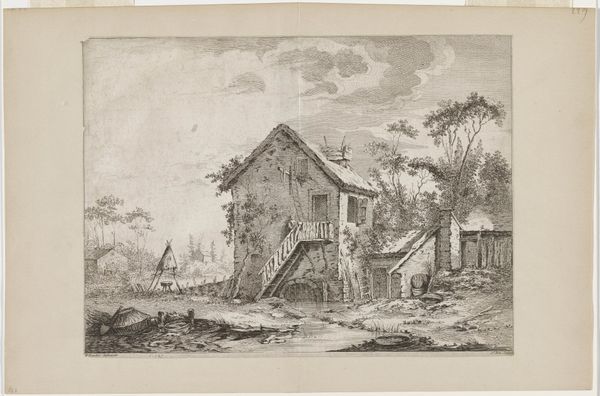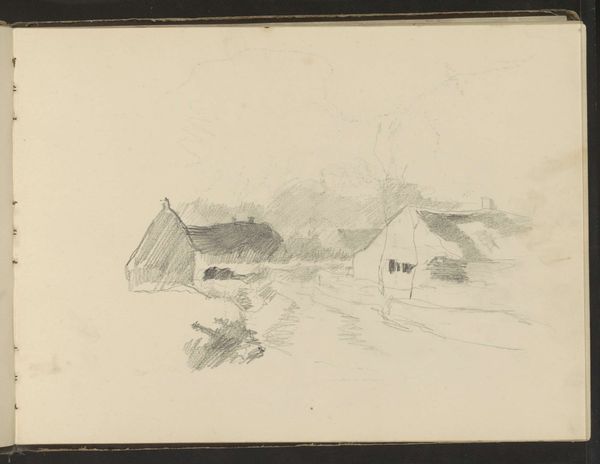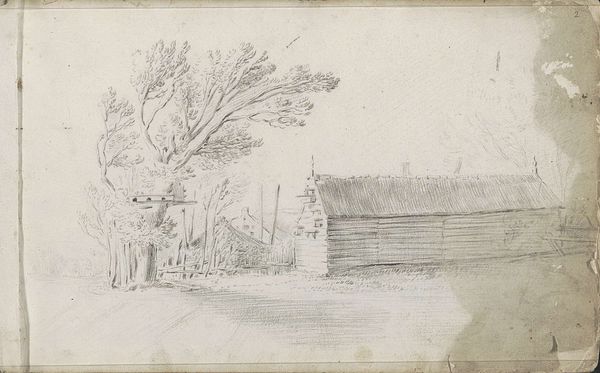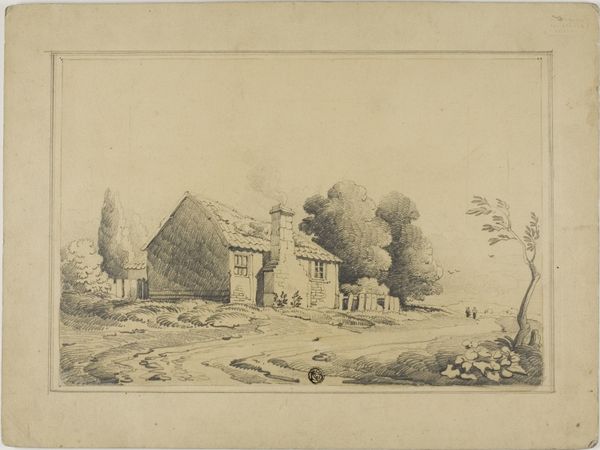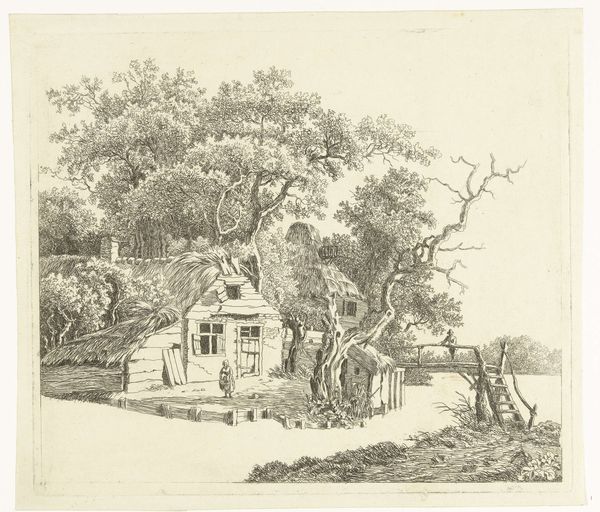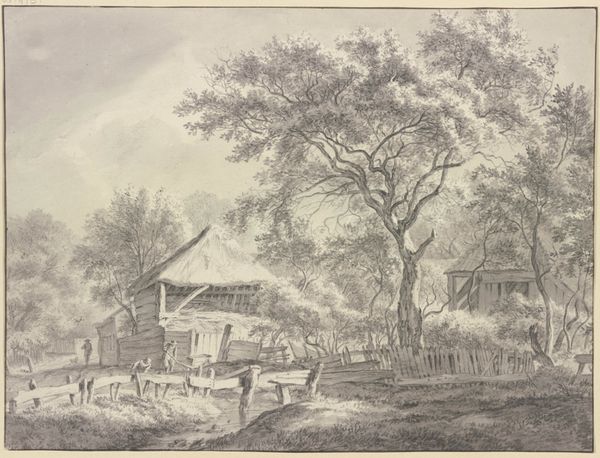
drawing, pencil
#
drawing
#
landscape
#
pencil
#
northern-renaissance
#
realism
Copyright: Rijks Museum: Open Domain
Curator: Arnoldus Johannes Eymer created "Landscape with a Barn" sometime between 1803 and 1818 using pencil in a drawing. Editor: The immediate impression is of a somber quietude. The gray pencil strokes create a sense of enclosure, a solitary structure nestled within the landscape. Curator: The starkness you observe may be less about artistic intention and more about the social circumstances surrounding such rural subjects in early 19th-century Holland. Landscapes, at the time, often served to highlight class disparity and land ownership. Does the inclusion of a humble barn signify anything about labor or perhaps about the peasant experience? Editor: Undoubtedly, the setting speaks to an agrarian reality. But consider how Eymer renders the scene. The lines, while seemingly straightforward, play with depth. Notice how he crafts varied tonal gradations that articulate the trees. Look, too, at the layered effect achieved by the contrast between the rough texture of the barn and the smoothness of the open land. It is not just documentation; it's skillful composition. Curator: Certainly. Yet, focusing too intently on the technique may eclipse the potential social commentary. Whose land are we looking at? Whose labor sustains it? And how does Eymer's depiction of this rustic barn either reinforce or challenge existing power structures? Does its dilapidation mirror the hardships endured by the peasantry, a comment on systemic neglect? Editor: Perhaps. Though, might we also appreciate the careful rendering of light and shadow? Observe the soft glow that kisses the barn's roof. It's about a play of visual elements, a controlled distribution of contrasts. We should avoid the temptation of automatically attributing intentions that can never truly be verified by art alone. Curator: Of course, one cannot definitively extract Eymer's precise political intentions. But as a scholar, I contend it’s our role to excavate those threads of socioeconomic commentary wherever they are discernable within a work. The political, philosophical and theoretical contexts surrounding this drawing would enhance a full interpretation. Editor: Well, on closer observation, I would add that regardless of how we might choose to understand its wider context, this piece serves as a potent example of how line and form, deftly employed, can quietly move us. Curator: I agree. Even without firm conclusions about its exact motivations, this unassuming piece compels us to probe the stories embedded in the scenery we often overlook.
Comments
No comments
Be the first to comment and join the conversation on the ultimate creative platform.
